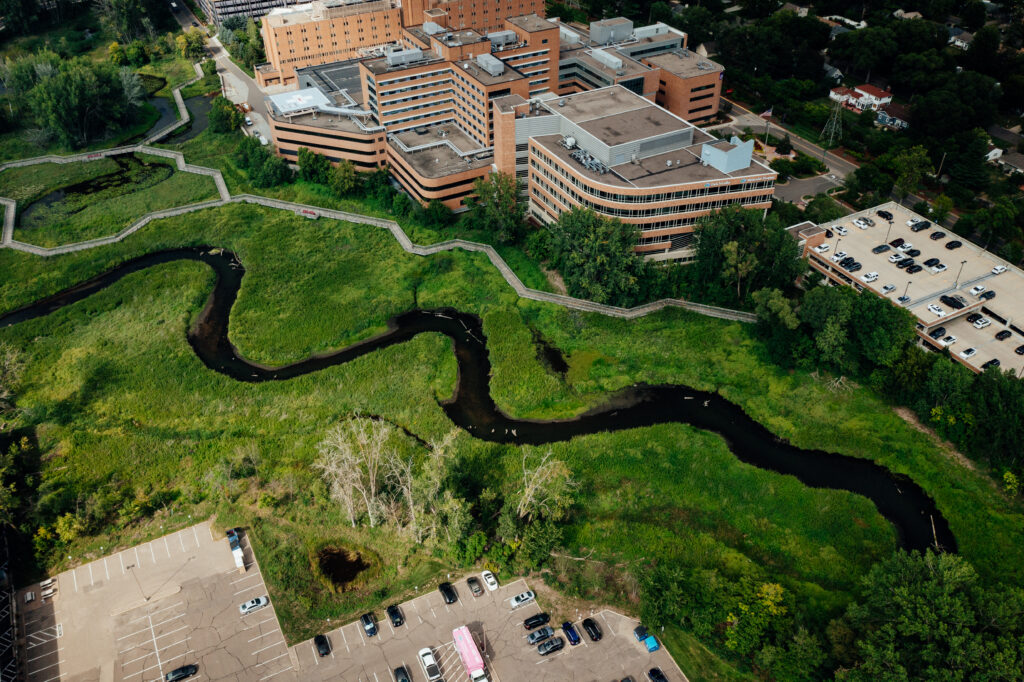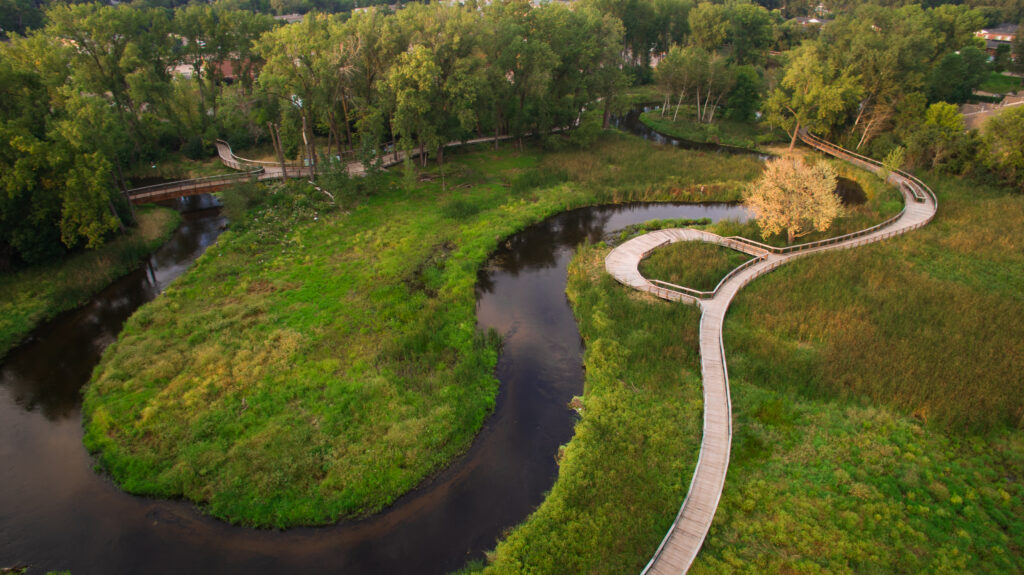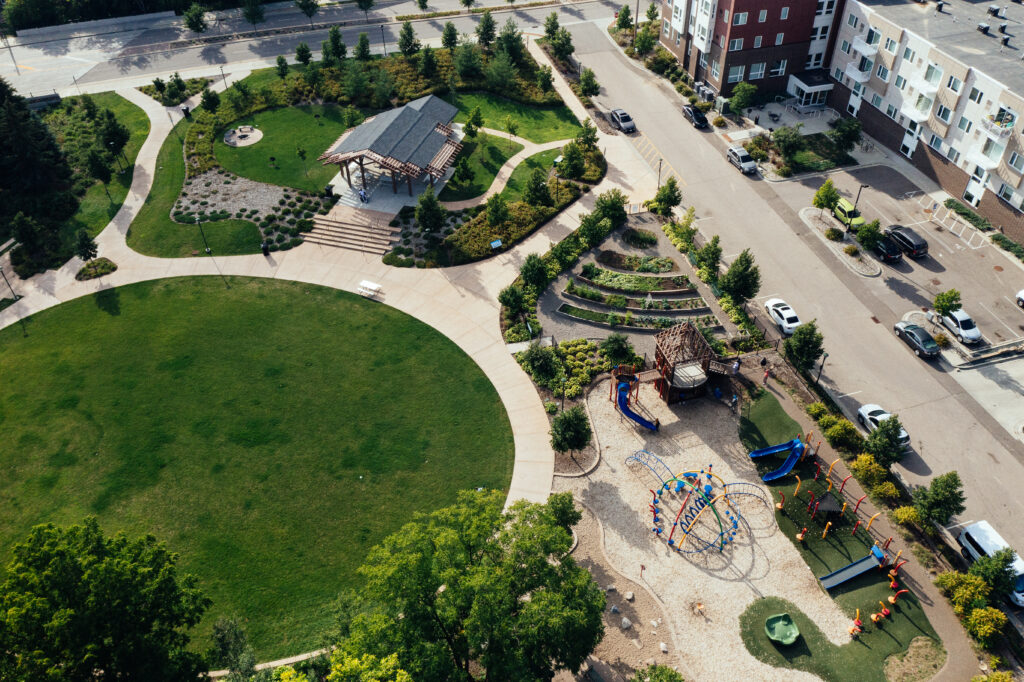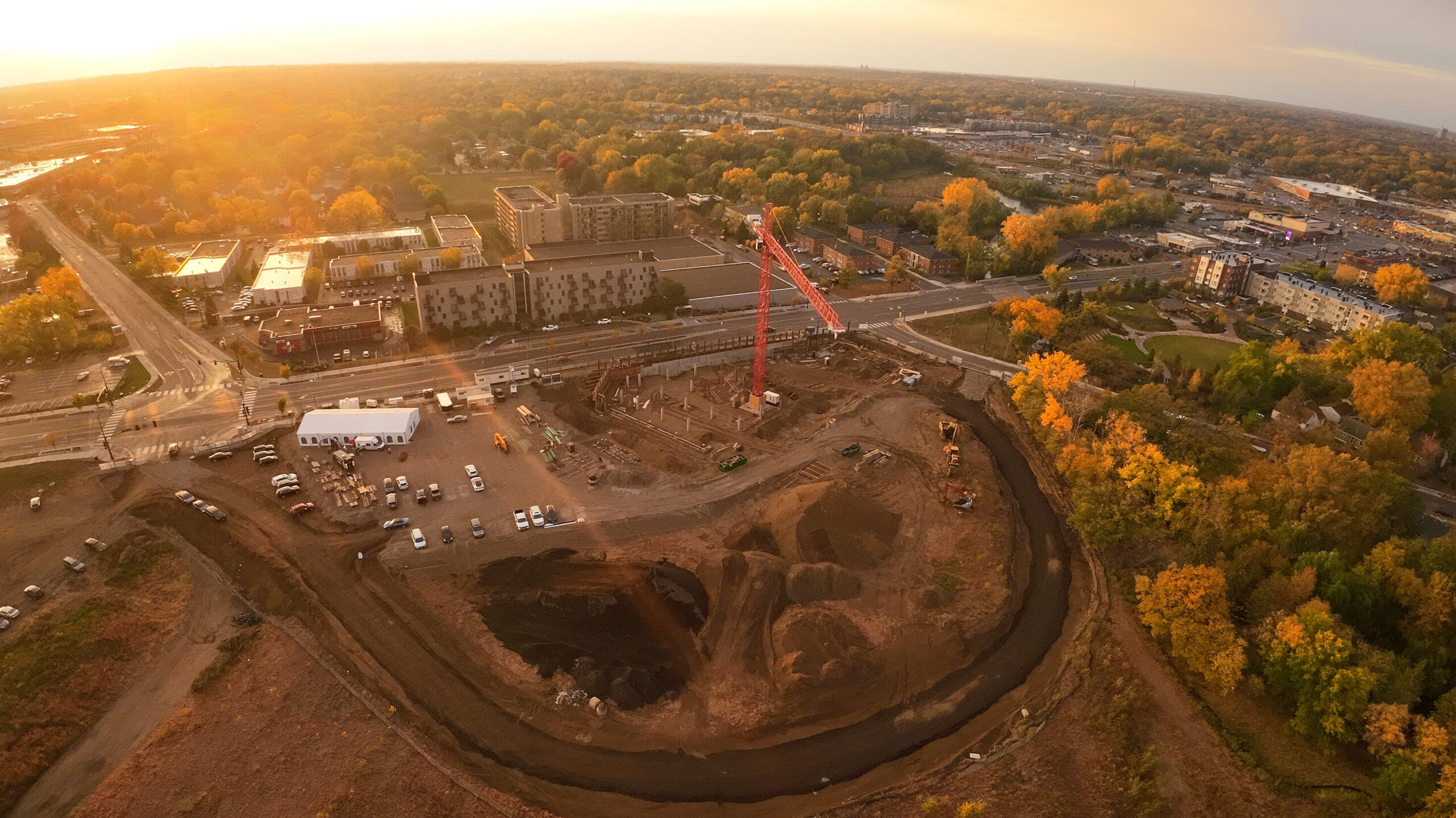
As the Greenway advances toward completion, MCWD plans to expand the vision of Balanced Urban Ecology downstream.
After more than a decade of work, the Minnehaha Creek Watershed District’s (MCWD) goal for a connected Minnehaha Creek Greenway is coming to life with the anticipated completion of the 325 Blake Road project, following the approval of an amended development agreement from the City of Hopkins.

Once the project is constructed, the majority of the Greenway – a series of projects through Hopkins and St. Louis Park that treat the most degraded section of Minnehaha Creek – will be complete, providing significant water and community benefits locally and downstream.
In the mid-twentieth century, this stretch of Minnehaha Creek was ditched, straightened, and hidden to make way for land-use development and urbanization. MCWD’s recent work in the Greenway provides significant treatment of regional stormwater runoff, while positioning the creek as an asset that can create a sense of place for nearby communities.
The Greenway reflects MCWD’s approach to improve the region’s land and water through collaboration with public and private land-use partners, a vision laid out in the MCWD’s Balanced Urban Ecology philosophy. This coordination is essential to achieve thriving, sustainable communities because what happens on the land ultimately impacts water resources.
“Meaningful restoration that integrates land and water planning takes time,” Michael Hayman, MCWD Director of Project Planning, said. “But we’re starting to see the Greenway’s benefits both upstream in Hopkins and St. Louis Park and downstream as the creek flows into Minneapolis’ lakes.”
A ‘capstone’ on 15 years of restoration efforts
In 2011, MCWD purchased a 17-acre industrial site in Hopkins at 325 Blake Road as a key piece in the restoration of the most degraded stretch of Minnehaha Creek.
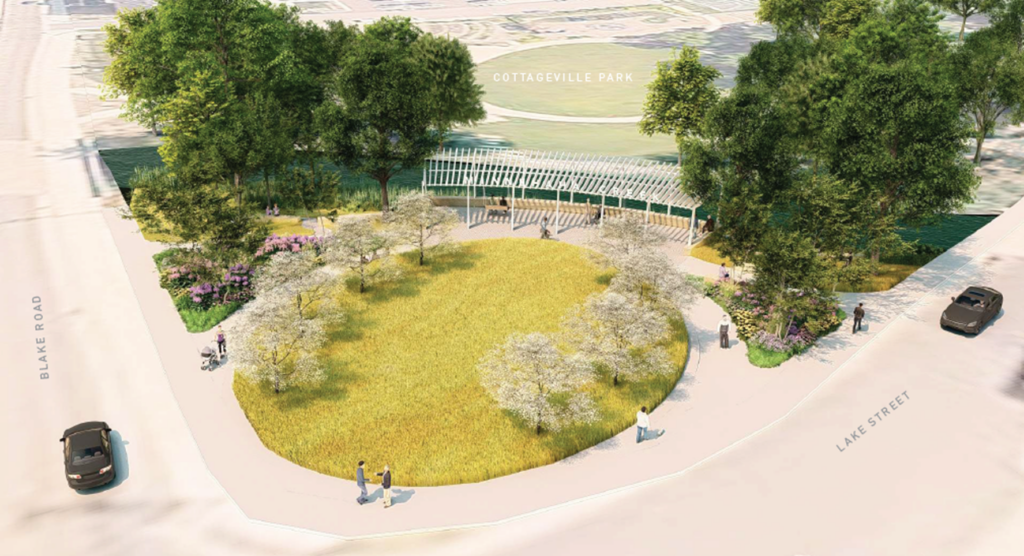
Since then, MCWD has partnered with the City of Hopkins and other public and private organizations to restore approximately five acres of the site. The remaining 12 acres will be developed by private partners, led by the real estate developer Alatus. Together, the entire area will become a water-centric, transit-oriented development that celebrates the nexus of community, economic, and environmental needs.
In December 2023, Alatus opened the first of five planned housing developments, an apartment building with 166 units of affordable housing, called CHORUS. The remaining developments include two mixed-income buildings, a senior co-op, and townhomes.
Following unfavorable market conditions in recent years, the City approved an amended development agreement with Alatus on February 13. The revised agreement includes updated design elements for the remaining buildings and an avenue to help finance the construction of the development project through city bonds for street utilities and public parking. Design plans also incorporate space for a future restaurant or other commercial property and new community access to Minnehaha Creek with interpretive features, educational signage, and improved recreation opportunities.
In addition to the housing developments, MCWD has completed site plans for restoration features, including stormwater treatment and streambank restoration, that it will bid for construction later this year. The site is expected to treat 270 acres of stormwater from Edina, Hopkins, and St. Louis Park upon completion. These stormwater treatment benefits will be equivalent to the City of Minneapolis’ entire waste load allocation for Lake Hiawatha, which could put the lake on track to be delisted from the State’s Impaired Waters list in the coming years.
“I think we’ve seen a lot of the housing aspect of this, looking at affordable housing, ownership opportunities, all the really amazing attributes that [are coming] to our housing stock … but this is a good reminder that we are stewards of this water as it is flowing through our community,” Hopkins Mayor Patrick Hanlon said at a Feb. 12 City Council meeting.
As MCWD and its partners make progress on the 325 Blake Road project, MCWD is also working to connect the Greenway trail system that runs through the Methodist Hospital campus, the Minnehaha Preserve, and Cottageville Park, with the construction of the Cedar to Greenway Regional Trail Connection project.
This final piece will link 2.3 miles of continuous, publicly accessible boardwalk and trails, while connecting the Greenway to the Cedar Regional Trail and the Southwest Light Rail Blake Road station.

The Minnehaha Creek Greenway: Twin Cites’ largest urban stream restoration
The Minnehaha Creek Greenway is a series of completed and planned projects that make up the largest urban stream restoration in the Twin Cities Metro Area. Altogether, when completed, the Greenway will connect 109 acres of green space through Hopkins and St. Louis Park with 30 acres of restored wetland, while removing over 416 pounds of phosphorus annually.
The Greenway could also serve as a model as cities look to partner to build climate resilience in infrastructure systems across the state, as Minnesota’s climate becomes warmer and wetter. By connecting the creek to its floodplain, restoring valuable wetlands, and re-meandering the creek to its natural curves, the Greenway projects have created significant flood storage to build resilience in the communities along Minnehaha Creek.
The first Greenway project began in 2009 when MCWD restored wetland and re-meandered curves in Minnehaha Creek behind St. Louis Park’s Methodist Hospital to prevent flooding and build a public boardwalk.
MCWD then worked with the City to re-meander more of the creek and reconnect it to its original floodplain, resulting in the 29-acre Minnehaha Creek Preserve. A boardwalk connects the preserve to the Methodist Hospital campus and provides residents with safe access to local transit.
In 2015, MCWD partnered with the City of Hopkins to restore and update Cottageville Park, creating a community garden, playground, and central lawn with an underground regional stormwater treatment system. Public partners also created new, affordable housing next to the park; now, they are continuing to expand the park to connect it to the 325 Blake Road site.
After more than 15 years, Minnehaha Creek is significantly cleaner, with three Greenway projects remaining: 325 Blake Road, a Cottageville Park expansion, and a Greenway to Cedar Trail connection.
With the Greenway’s anticipated completion, MCWD is working to foster a partnership with the land-use community in Minneapolis to continue improving water resources and community assets downstream.
“The work in the Greenway to date is already producing benefits downstream in Lake Hiawatha with water quality data trends showing improvement,” Hayman said. “Now that final work in the Greenway is progressing, it’s time to focus our efforts on the localized issues downstream that won’t be solved with additional upstream restoration.”

